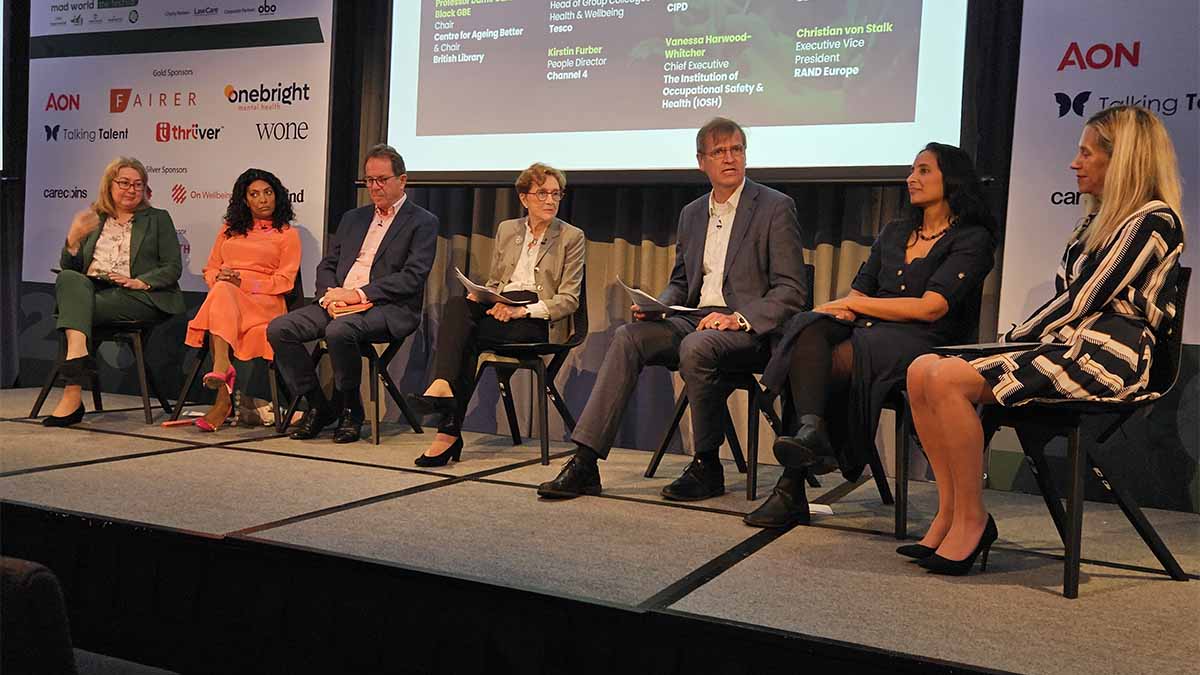
Institutional change rather than individual interventions is the key to unlocking a healthy, happy and productive workforce, delegates agreed at last week’s MAD World Festival of Workplace Culture, Employee Health and Wellbeing.
However, there was broad agreement between both panellists and the audience at the keynote debate, moderated by Professor Dame Carol Black, chair of the Centre for Ageing Better and the Department for Work and Pension’s occupational health taskforce, that really the answer is ‘and’ – in other words, it needs to be both institutional change and individual interventions – rather than either one or the other.
The debate saw Peter Cheese, chief executive of the CIPD, Dr Clare Fernandes, chief medical officer at the BBC, and Vanessa Harwood-Whitcher, chief executive of the Institution of Occupational Safety and Health, make the case for institutional change.
On the other ‘team’, arguing for individual interventions, was Chris van Stolk, executive vice president of RAND Europe, Dhavani Bishop, head of group colleague health and wellbeing at Tesco, and Kirstin Furber, people director at Channel 4.
Cheese, for example, argued that there is a “business, an economic, a social and a moral case that organisations do indeed need to take regard for the wellbeing of their people”.
He added: “This is about responsible business. It is about creating good work, where work is good for people as an outcome and where wellbeing is seen as an absolutely fundamental construct as we design for the future of work.”
Dr Fernandes highlighted the power and impact of institutional interventions, such as policy, guidance, and training. There was a clear need for robust training for managers, robust policies, and robust practices on how to manage sickness absence. “Individuals just can’t do that in the workplace,” she added.
Individual interventions were simply not going to achieve the seismic change needed, argued Harwood-Whitcher. “A happy, healthy productive workforce is achieved through institutional change and a workplace-led culture,” she said.
“Individuals need environments to be designed to enable them to develop and thrive. Ultimately, each institution must create and maintain a framework and a culture that creates the right conditions,” she added.
Much of the argument for individual intervention focused on the need for, and the increasing expectation that there will be, a personalised, bespoke approach by organisations to employee health and wellbeing.
“We can talk about organisational culture all we like. But what we really start need to be thinking about is what is going to move the needle specifically, and that all comes back to individual interventions,” said van Stolk.
“Institutional change? Yes, it does help. But you really do need individual interventions and personalisation,” agreed Bishop, emphasising that one size does not fit all.
“What organisations can do is help motivate and engage that individual intervention, which probably will have to be bespoke to support people. But real change happens at an individual level, with habits and learning, and that’s where we should be focusing,” she added.
People bring their own ways of working to an organisation, the individual creates the environment, said Furber, and organisations need to be tailoring healthy environments to the individual.
“It is individuals who are doing it; they are making it happen; they are creating the culture,” she said.
A poll at the end then put the question to the audience, with 86% choosing institutional change over 14% for individual intervention.
Sign up to our weekly round-up of HR news and guidance
Receive the Personnel Today Direct e-newsletter every Wednesday
“I’m sure most of us think it is both,” concluded Dame Carol. “I don’t think it is one or the other.”



